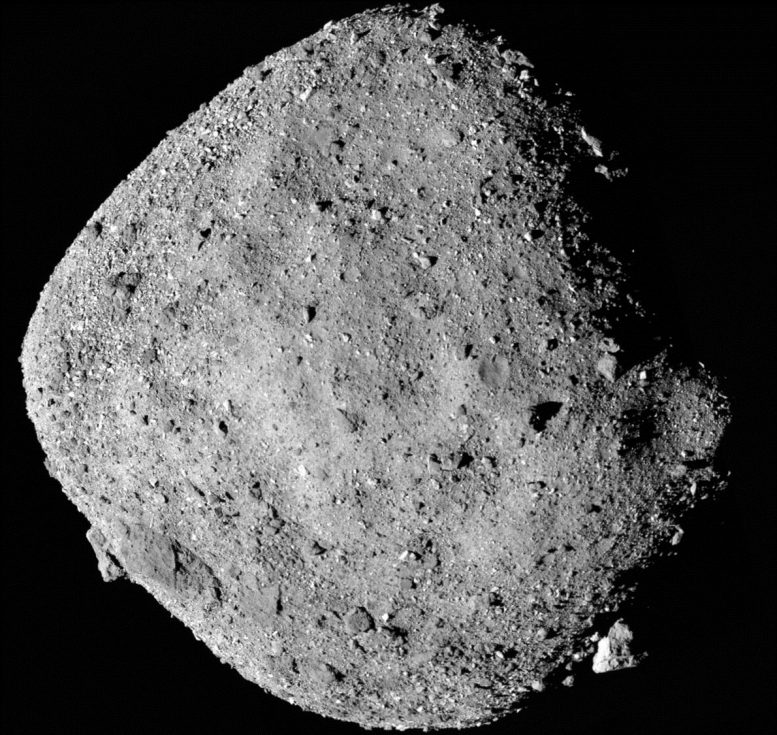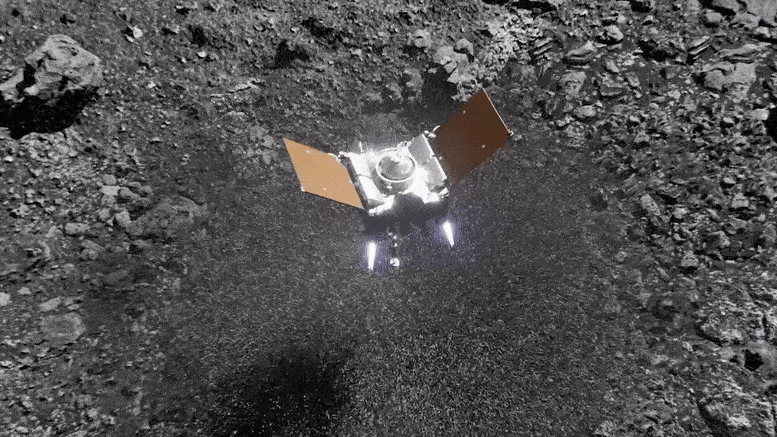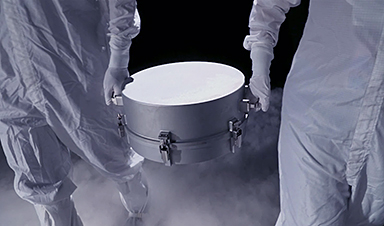Japanese scientists detected all five nucleobases — building blocks of DNA and RNA — in samples returned from asteroid Bennu by NASA's OSIRIS-REx mission.
NASA's OSIRIS-REx mission brought back 121.6 grams of asteroid Bennu, unveiling nitrogen-rich organic matter, including DNA's essential bases. Scientists found differences between Bennu's chemistry and that of meteorites like Ryugu, suggesting diverse cosmic conditions shaped their molecular makeup.
Asteroids: Ancient Messengers of Life?
Asteroids, small rocky bodies in the inner Solar System, may have played a key role in delivering water and essential chemical ingredients for life to early Earth. While meteorites that fall to Earth come from asteroids, their exposure to the atmosphere and biological contamination makes them difficult to study. The best way to analyze asteroid material is by collecting pristine samples directly from space. So far, only two countries have successfully done this: Japan, with its Hayabusa and Hayabusa2 missions, and the United States, with OSIRIS-REx.

NASA's OSIRIS-REx Brings Bennu to Earth
In September 2023, NASA's OSIRIS-REx mission returned 121.6 grams of material from asteroid Bennu, the largest asteroid sample ever brought to Earth. Now, an international research team led by Dr. Daniel Glavin and Dr. Jason Dworkin at NASA's Goddard Space Flight Center has made a groundbreaking discovery: ammonia and nitrogen-rich organic compounds in the Bennu samples.
Their findings, published today (January 29) in Nature Astronomy, add weight to the theory that asteroids may have helped kick-start life on Earth. Notably, Japanese researchers on the team detected all five nitrogenous bases — key molecules needed to form DNA and RNA — inside the asteroid sample, a discovery that strengthens the idea that life's building blocks may have originated in space.
The Bennu samples from NASA were handled under nitrogen to prevent contamination by Earth's atmosphere. A 17.75 mg sample was processed and analyzed for N-heterocycles—organic molecules with a ring structure containing carbon and nitrogen—using high-resolution mass spectrometry at Kyushu University.

The analysis was carried out by a research team, whose members are part of the OSIRIS-REx sample analysis team, consisting of Associate Professor Yasuhiro Oba of Hokkaido University, Principal Researcher Yoshinori Takano of JAMSTEC and Keio University, Dr. Toshiki Koga of JAMSTEC, Professor Hiroshi Naraoka of Kyushu University, and Associate Professor Yoshihiro Furukawa of Tohoku University.
The analysis revealed that the concentration of N-heterocycles is approximately 5 nmol/g, 5-10 times higher than that reported from Ryugu. In addition to the five nitrogenous bases — adenine, guanine, cytosine, thymine, and uracil — required for building DNA and RNA, the researchers also found xanthine, hypoxanthine, and nicotinic acid (vitamin B3).
"In previous research, uracil and nicotinic acid were detected in the samples from asteroid Ryugu, but the other four nucleobases were absent. The difference in abundance and complexity of N-heterocycles between Bennu and Ryugu could reflect the differences in the environment to which these asteroids have been exposed in space," Koga explains.

Clues from Other Space Rocks
Samples from the meteorites Murchison and Orgueil were also processed and analyzed previously under identical conditions for comparison. The research team observed that the ratio of purines (adenine and guanine) to pyrimidines (cytosine, thymine, and uracil) was much lower in the Bennu samples compared to both Murchison and Orgueil.
"There are multiple possible reasons for this observed difference," Oba says. "They may be due to differences in parent bodies or formation pathways, or the Bennu asteroid was exposed to a cold molecular cloud environment where pyrimidine formation is more likely to occur."
"Our findings, which contribute to the larger picture painted by all the authors of the paper, indicate that nucleobase chemistry in the Bennu samples must be further studied," concluded Naraoka. Another important result of this study is that, by comparing meteorites with Bennu samples, a reference for the reanalysis of other meteorites in collections across the globe has been created.

Reference: "Abundant ammonia and nitrogen-rich soluble organic matter in samples from asteroid (101955) Bennu" by Daniel P. Glavin, Jason P. Dworkin, Conel M. O'D. Alexander, José C. Aponte, Allison A. Baczynski, Jessica J. Barnes, Hans A. Bechtel, Eve L. Berger, Aaron S. Burton, Paola Caselli, Angela H. Chung, Simon J. Clemett, George D. Cody, Gerardo Dominguez, Jamie E. Elsila, Kendra K. Farnsworth, Dionysis I. Foustoukos, Katherine H. Freeman, Yoshihiro Furukawa, Zack Gainsforth, Heather V. Graham, Tommaso Grassi, Barbara Michela Giuliano, Victoria E. Hamilton, Pierre Haenecour, Philipp R. Heck, Amy E. Hofmann, Christopher H. House, Yongsong Huang, Hannah H. Kaplan, Lindsay P. Keller, Bumsoo Kim, Toshiki Koga, Michael Liss, Hannah L. McLain, Matthew A. Marcus, Mila Matney, Timothy J. McCoy, Ophélie M. McIntosh, Angel Mojarro, Hiroshi Naraoka, Ann N. Nguyen, Michel Nuevo, Joseph A. Nuth III, Yasuhiro Oba, Eric T. Parker, Tanya S. Peretyazhko, Scott A. Sandford, Ewerton Santos, Philippe Schmitt-Kopplin, Frederic Seguin, Danielle N. Simkus, Anique Shahid, Yoshinori Takano, Kathie L. Thomas-Keprta, Havishk Tripathi, Gabriella Weiss, Yuke Zheng, Nicole G. Lunning, Kevin Righter, Harold C. Connolly Jr. and Dante S. Lauretta, 29 January 2025, Nature Astronomy.
DOI: 10.1038/s41550-024-02472-9
News
We May Never Know if AI Is Conscious, Says Cambridge Philosopher
As claims about conscious AI grow louder, a Cambridge philosopher argues that we lack the evidence to know whether machines can truly be conscious, let alone morally significant. A philosopher at the University of [...]
AI Helped Scientists Stop a Virus With One Tiny Change
Using AI, researchers identified one tiny molecular interaction that viruses need to infect cells. Disrupting it stopped the virus before infection could begin. Washington State University scientists have uncovered a method to interfere with a key [...]
Deadly Hospital Fungus May Finally Have a Weakness
A deadly, drug-resistant hospital fungus may finally have a weakness—and scientists think they’ve found it. Researchers have identified a genetic process that could open the door to new treatments for a dangerous fungal infection [...]
Fever-Proof Bird Flu Variant Could Fuel the Next Pandemic
Bird flu viruses present a significant risk to humans because they can continue replicating at temperatures higher than a typical fever. Fever is one of the body’s main tools for slowing or stopping viral [...]
What could the future of nanoscience look like?
Society has a lot to thank for nanoscience. From improved health monitoring to reducing the size of electronics, scientists’ ability to delve deeper and better understand chemistry at the nanoscale has opened up numerous [...]
Scientists Melt Cancer’s Hidden “Power Hubs” and Stop Tumor Growth
Researchers discovered that in a rare kidney cancer, RNA builds droplet-like hubs that act as growth control centers inside tumor cells. By engineering a molecular switch to dissolve these hubs, they were able to halt cancer [...]
Platelet-inspired nanoparticles could improve treatment of inflammatory diseases
Scientists have developed platelet-inspired nanoparticles that deliver anti-inflammatory drugs directly to brain-computer interface implants, doubling their effectiveness. Scientists have found a way to improve the performance of brain-computer interface (BCI) electrodes by delivering anti-inflammatory drugs directly [...]
After 150 years, a new chapter in cancer therapy is finally beginning
For decades, researchers have been looking for ways to destroy cancer cells in a targeted manner without further weakening the body. But for many patients whose immune system is severely impaired by chemotherapy or radiation, [...]
Older chemical libraries show promise for fighting resistant strains of COVID-19 virus
SARS‑CoV‑2, the virus that causes COVID-19, continues to mutate, with some newer strains becoming less responsive to current antiviral treatments like Paxlovid. Now, University of California San Diego scientists and an international team of [...]
Lower doses of immunotherapy for skin cancer give better results, study suggests
According to a new study, lower doses of approved immunotherapy for malignant melanoma can give better results against tumors, while reducing side effects. This is reported by researchers at Karolinska Institutet in the Journal of the National [...]
Researchers highlight five pathways through which microplastics can harm the brain
Microplastics could be fueling neurodegenerative diseases like Alzheimer's and Parkinson's, with a new study highlighting five ways microplastics can trigger inflammation and damage in the brain. More than 57 million people live with dementia, [...]
Tiny Metal Nanodots Obliterate Cancer Cells While Largely Sparing Healthy Tissue
Scientists have developed tiny metal-oxide particles that push cancer cells past their stress limits while sparing healthy tissue. An international team led by RMIT University has developed tiny particles called nanodots, crafted from a metallic compound, [...]
Gold Nanoclusters Could Supercharge Quantum Computers
Researchers found that gold “super atoms” can behave like the atoms in top-tier quantum systems—only far easier to scale. These tiny clusters can be customized at the molecular level, offering a powerful, tunable foundation [...]
A single shot of HPV vaccine may be enough to fight cervical cancer, study finds
WASHINGTON -- A single HPV vaccination appears just as effective as two doses at preventing the viral infection that causes cervical cancer, researchers reported Wednesday. HPV, or human papillomavirus, is very common and spread [...]
New technique overcomes technological barrier in 3D brain imaging
Scientists at the Swiss Light Source SLS have succeeded in mapping a piece of brain tissue in 3D at unprecedented resolution using X-rays, non-destructively. The breakthrough overcomes a long-standing technological barrier that had limited [...]
Scientists Uncover Hidden Blood Pattern in Long COVID
Researchers found persistent microclot and NET structures in Long COVID blood that may explain long-lasting symptoms. Researchers examining Long COVID have identified a structural connection between circulating microclots and neutrophil extracellular traps (NETs). The [...]





















